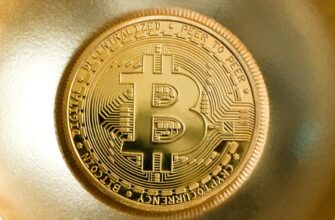- How to Get a Bitcoin Account: Your 2024 Beginner’s Guide
- Understanding Your “Bitcoin Account”: It’s Actually a Wallet
- Step-by-Step: How to Get Your Bitcoin Wallet
- Securing Your Bitcoin Account Like a Pro
- How to Buy Bitcoin and Fund Your Wallet
- Using Your Bitcoin Wallet: Sending and Receiving
- Bitcoin Account FAQ: Your Questions Answered
How to Get a Bitcoin Account: Your 2024 Beginner’s Guide
Want to join the world of cryptocurrency but unsure where to start? Learning how to get a Bitcoin account (more accurately called a Bitcoin wallet) is your essential first step. This guide breaks down everything you need – from choosing the right wallet to making your first transaction – in simple, actionable steps. Let’s demystify the process and get you set up securely.
Understanding Your “Bitcoin Account”: It’s Actually a Wallet
First things first: Bitcoin doesn’t use traditional “accounts” like banks. Instead, you use a digital Bitcoin wallet. This wallet doesn’t store physical coins; it safeguards two crucial cryptographic keys:
- Public Key (Your Address): Like an account number, shared to receive Bitcoin.
- Private Key: Like a super-secure password, used to access and send your Bitcoin. Never share this!
Your “Bitcoin account” is essentially the combination of these keys managed within your chosen wallet.
Step-by-Step: How to Get Your Bitcoin Wallet
Follow these steps to create your first Bitcoin wallet:
- Choose Your Wallet Type:
- Software Wallets (Best for Beginners): Apps for your phone (e.g., Exodus, Trust Wallet) or computer (e.g., Electrum). Easy to use and free.
- Hardware Wallets (Best Security): Physical devices (e.g., Ledger, Trezor). Store keys offline, immune to online hacks. Ideal for larger holdings.
- Web Wallets (Convenient but Less Secure): Accessed via browser (e.g., Blockchain.com). Quick setup but rely on a third party.
- Paper Wallets (Advanced): Physical printout of keys. Ultra-secure if generated offline but fragile and complex for beginners.
- Download & Install (For Software/Hardware): Get the app from official sources (App Store, Google Play, or manufacturer’s website). For hardware wallets, follow the device setup instructions.
- Create Your Wallet: Open the app/software and select “Create New Wallet.”
- Write Down Your Recovery Phrase (CRITICAL STEP): You’ll get 12-24 random words. Write them in order on paper and store securely offline. This is the only way to recover your Bitcoin if you lose your device or forget your password. Never store it digitally or share it.
- Set a Strong Password/PIN: Add an extra layer of protection to access the wallet itself.
- Find Your Bitcoin Address: Look for “Receive” or “Receive Bitcoin” in your wallet. This unique string of letters/numbers is where people send you Bitcoin. You can share it freely.
Securing Your Bitcoin Account Like a Pro
Protecting your Bitcoin is paramount. Implement these security essentials:
- Guard Your Recovery Phrase: Treat it like cash. Store multiple copies in secure, physical locations (safe, safety deposit box).
- Enable 2-Factor Authentication (2FA): Add this extra login step wherever possible, especially on exchanges and web wallets.
- Use Strong, Unique Passwords: Different passwords for your wallet, email, and exchanges.
- Beware of Phishing: Double-check URLs and emails. Legitimate companies won’t ask for your recovery phrase or private key.
- Keep Software Updated: Install updates for your wallet app and device OS promptly.
- Consider a Hardware Wallet for Significant Holdings: For amounts you wouldn’t want to lose, invest in cold storage.
How to Buy Bitcoin and Fund Your Wallet
With your wallet ready, here’s how to get Bitcoin:
- Choose a Cryptocurrency Exchange: Platforms like Coinbase, Kraken, or Binance let you buy Bitcoin with fiat currency (USD, EUR, etc.).
- Sign Up & Verify: Create an account on the exchange and complete identity verification (KYC).
- Deposit Funds: Link your bank account, debit card, or use other payment methods offered.
- Buy Bitcoin: Navigate to the trading section, select Bitcoin (BTC), enter the amount, and execute the buy order.
- Withdraw to Your Wallet: Crucial Step! Go to “Withdraw” on the exchange. Paste your wallet’s Bitcoin receive address carefully. Confirm the transaction. Never store large amounts long-term on exchanges.
Using Your Bitcoin Wallet: Sending and Receiving
- Receiving Bitcoin: Simply provide the sender with your wallet’s unique Bitcoin receive address (a QR code or text string). Funds appear after network confirmation (usually 10-60 mins).
- Sending Bitcoin:
- Open your wallet and select “Send.”
- Paste the recipient’s correct Bitcoin address or scan their QR code. Double-check!
- Enter the amount to send (in BTC or your local currency equivalent).
- Review the transaction fee (network cost). Higher fees usually mean faster confirmation.
- Confirm and authorize the send (may require password/PIN).
Bitcoin Account FAQ: Your Questions Answered
Q: Is a Bitcoin account free to create?
A: Yes! Downloading and setting up a software or web wallet costs nothing. Hardware wallets require purchasing the physical device.
Q: Can I get a Bitcoin account anonymously?
A: While wallets themselves can be pseudonymous, buying Bitcoin on regulated exchanges requires identity verification (KYC). Some decentralized methods offer more privacy but are complex and carry higher risks.
Q: How long does it take to set up a Bitcoin wallet?
A: Downloading a software wallet and writing down your recovery phrase takes less than 5 minutes. Buying Bitcoin on an exchange adds time for sign-up and verification (can be minutes to days).
Q: Can I lose my Bitcoin?
A: Yes, permanently, if you lose your recovery phrase and forget your password, or if you send funds to the wrong address. Security is your responsibility.
Q: What’s the difference between a Bitcoin wallet and an exchange account?
A: A wallet gives you direct control of your private keys and Bitcoin. An exchange account holds your Bitcoin for you (like a bank). You need an exchange to buy/sell easily, but you should withdraw Bitcoin to your personal wallet for security.
Q: Are Bitcoin transactions reversible?
A: No. Once confirmed on the blockchain, Bitcoin transactions are irreversible. Always double-check addresses before sending.
Ready to Start? Getting your Bitcoin wallet is the gateway to exploring cryptocurrency. By choosing a secure wallet, safeguarding your recovery phrase, and using reputable exchanges, you’re set for a safe entry into the world of Bitcoin. Remember, start small, prioritize security, and never invest more than you can afford to lose.








